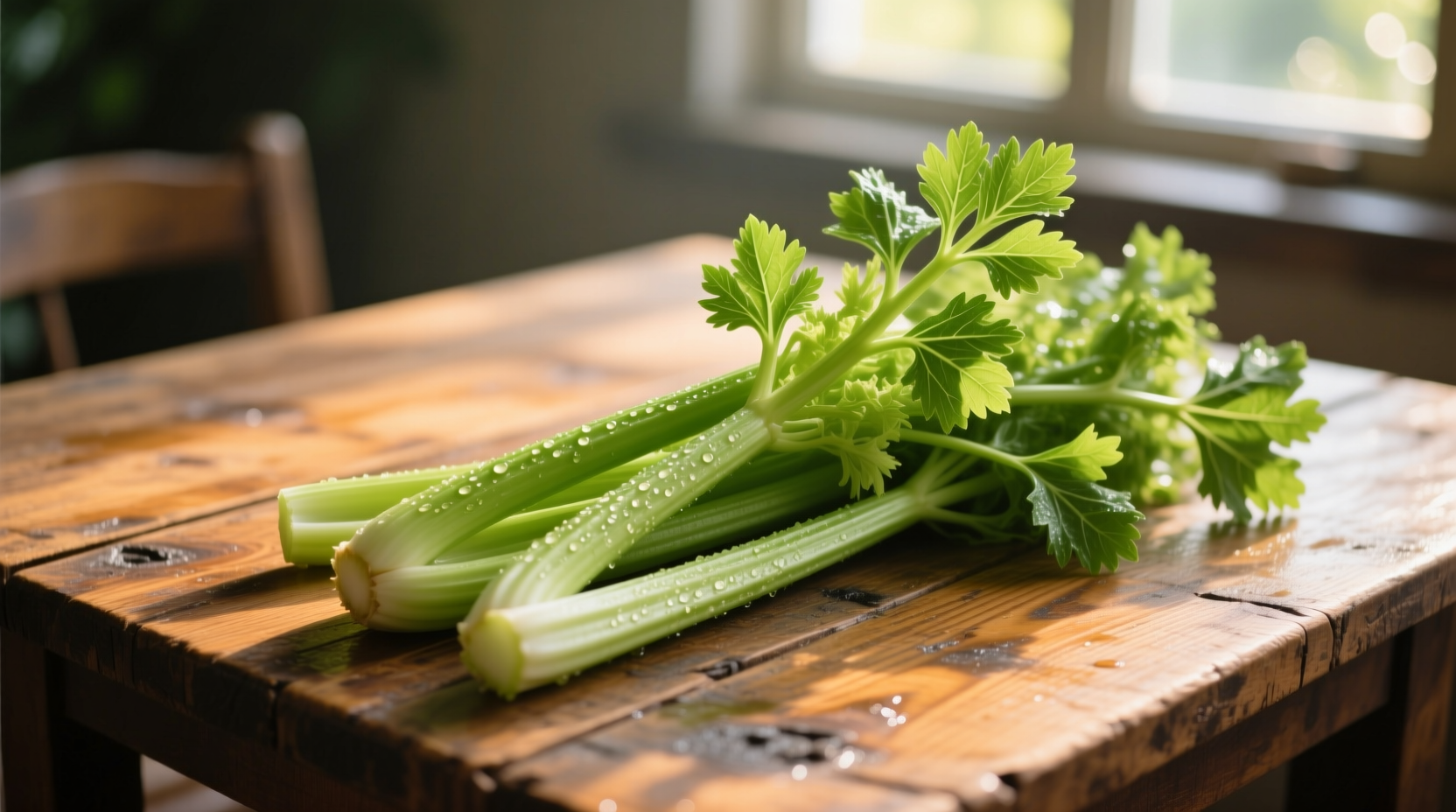The Celery Juice Trend: What's Behind the Hype?
Over the past few years, celery juice has exploded in popularity, touted as a "miracle" health elixir that can reduce inflammation, improve digestion, and even reverse chronic conditions. Social media influencers and wellness celebrities have championed drinking 16-32 ounces of pure celery juice daily on an empty stomach. But what does the actual evidence say about these claims?
What's Actually in Celery Juice?
Let's examine the nutritional reality. When you juice celery, you're primarily getting:
- Water (95% of its composition)
- Small amounts of vitamin K (important for blood clotting)
- Traces of vitamin C and potassium
- Natural compounds like apigenin and luteolin (with potential anti-inflammatory properties)
However, juicing removes nearly all dietary fiber—the component that gives celery its most significant health benefits. According to USDA nutritional data, one cup of chopped celery contains 1.6g of fiber, while the same volume of juice contains virtually none.
| Nutrient | Whole Celery (1 cup) | Celery Juice (1 cup) |
|---|---|---|
| Calories | 16 | 42 |
| Fiber | 1.6g | 0.1g |
| Vitamin K | 30% DV | 10% DV |
| Vitamin C | 5% DV | 2% DV |
| Potassium | 6% DV | 4% DV |
This nutritional comparison reveals a critical truth: juicing concentrates calories and sugars while removing the fiber that makes celery beneficial. The Academy of Nutrition and Dietetics consistently emphasizes that whole fruits and vegetables provide superior nutrition compared to juices for this exact reason.
Evaluating the Health Claims: Evidence vs. Anecdote
Let's examine the most common claims about celery juice through the lens of current scientific understanding:
"Celery juice reduces inflammation"
Celery contains compounds like apigenin that have shown potential anti-inflammatory effects in laboratory studies. However, a 2021 review in Nutrients journal noted that most research on celery's bioactive compounds has been conducted in test tubes or animals, not humans. The concentrations used in these studies far exceed what you'd get from drinking celery juice.
"It improves digestion and gut health"
This claim contradicts basic nutritional science. Without fiber—the very component removed during juicing—celery juice provides minimal digestive benefits. In fact, the American Gastroenterological Association states that dietary fiber is essential for healthy digestion, and juicing eliminates this critical component.
"Celery juice lowers blood pressure"
Some small studies suggest celery extract might have modest blood pressure-lowering effects due to compounds called phthalides. However, a comprehensive 2022 analysis in the American Journal of Clinical Nutrition concluded that evidence for celery's blood pressure effects in humans remains limited and inconclusive. For those with hypertension, proven approaches like the DASH diet offer far more reliable results.

Practical Considerations: Cost, Time, and Realistic Benefits
Before incorporating celery juice into your routine, consider these practical factors:
Cost Analysis
Producing 16 ounces of celery juice requires approximately 1 pound of celery. At average prices ($2-3 per pound), this translates to $14-21 weekly—significantly more expensive than eating whole celery or other vegetables. For comparison, the same budget could provide multiple servings of diverse, nutrient-dense vegetables.
Time Investment
Preparing daily celery juice requires washing, chopping, juicing, and cleaning equipment—a process taking 15-20 minutes daily. This time could alternatively be spent preparing balanced meals with greater nutritional variety.
Context Boundaries: When Celery Juice Might Make Sense
Celery juice may have limited applications in specific contexts:
- As a temporary hydration option during acute illness when solid food is difficult
- For individuals with certain digestive conditions who cannot tolerate fiber (under medical supervision)
- As part of a short-term dietary experiment to assess personal tolerance
However, for most healthy individuals, these scenarios don't apply, and whole celery or diverse vegetable intake provides superior benefits.
Better Alternatives for Common Health Goals
Instead of focusing on celery juice, consider these evidence-based approaches:
For Digestive Health
Eat whole celery with meals, along with other high-fiber foods like oats, beans, and berries. The Mayo Clinic recommends 21-38 grams of daily fiber from whole foods for optimal digestive function.
For Inflammation Reduction
Follow an anti-inflammatory diet pattern emphasizing whole foods: fatty fish, leafy greens, nuts, berries, and olive oil. Research published in Nature Medicine shows that Mediterranean-style eating patterns produce measurable reductions in inflammatory markers.
For General Wellness
Focus on dietary diversity. The American Heart Association emphasizes that consuming a variety of vegetables provides broader nutritional benefits than any single food or juice.
Final Assessment: Is Celery Juice Worth It?
Celery juice isn't harmful for most people in moderation, but it's significantly overhyped relative to its actual benefits. The scientific consensus from nutrition experts is clear: whole vegetables provide superior nutrition compared to juices. Rather than investing time and money in celery juice, prioritize eating a variety of whole vegetables, staying properly hydrated, and following evidence-based dietary patterns for long-term health.











 浙公网安备
33010002000092号
浙公网安备
33010002000092号 浙B2-20120091-4
浙B2-20120091-4